3.2 Mechanisms of Macroevolution
The Geologic Time Scale shows large-scale changes in life forms at different points in Earth’s history. These significant shifts raise an important question: How do entirely new traits and body plans evolve over time?
We’ve already explored several mechanisms of evolution, including mutation, genetic drift, gene flow, and natural selection, which explain the genetic changes associated with microevolution. While these small changes can accumulate over time and lead to noticeable differences, they don’t fully explain the origin of major evolutionary innovations. To understand these large-scale changes, we turn to the mechanisms of macroevolution. In this section, we’ll examine several key mechanisms that help explain how new features arise, including changes in developmental genes, the repurposing of existing traits, and the gradual evolution of complex structures through beneficial intermediate stages.
1. Evolutionary Developmental Biology (Evo-Devo)
One of the most powerful ways to understand how major evolutionary changes occur is through the field of evolutionary developmental biology, or evo-devo. This area of study explores how small changes in the genes that control development can lead to large-scale differences in body structure and function. By examining how organisms grow and develop, scientists have discovered that altering when, where, or how certain genes are expressed can result in entirely new traits. Below are three key mechanisms within evo-devo that help explain how complex features evolve.
Gene Duplication and Divergence
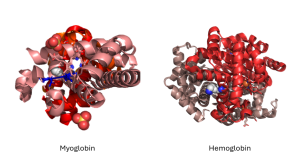
Gene duplication occurs when a gene is accidentally copied during DNA replication. This creates an extra copy of the gene, which is free to accumulate mutations without affecting the original gene’s function. Over time, the duplicated gene may evolve a new role, which can allow for the development of new traits. For example, in vertebrates, gene duplication events have led to the evolution of different types of globin proteins, which are essential for transporting oxygen in the blood. These proteins, such as hemoglobin in red blood cells and myoglobin in muscles, originated from a common ancestral gene that was duplicated and then specialized through evolutionary changes.
Homeotic Genes and Body Plan Modifications
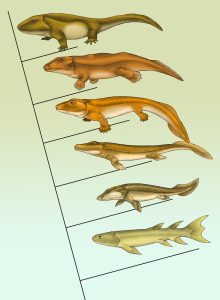
Homeotic genes are a group of regulatory genes that control the basic layout of an organism’s body during early development. They help determine where key body parts like limbs, wings, or antennae will form. These genes are remarkably similar across many different species, even those that are only distantly related. This high level of similarity suggests that homeotic genes play a critical role in development, and that even small changes in how or when they are expressed can lead to major differences in body structure. For example, changes in homeotic gene activity are thought to have contributed to the evolution of tetrapods (four-limbed vertebrates) from their fish ancestors. In this transition, shifts in the expression of these genes helped modify fin structures into limbs with digits, which allowed the movement from water to land.
Paedomorphosis and the Retention of Juvenile Traits
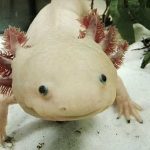
Paedomorphosis is a process in which adults of a species retain traits that were previously seen only in juveniles. This happens through changes in the timing of development. By slowing down or halting certain developmental processes, organisms can preserve youthful features into adulthood. A well-known example is the axolotl, a type of salamander that retains its gills and aquatic lifestyle throughout its life, unlike most other amphibians that undergo metamorphosis. Paedomorphosis can lead to new evolutionary pathways by allowing traits that were once temporary to become lifelong (permanent) and potentially advantageous.
2. Co-option (Exaptation)
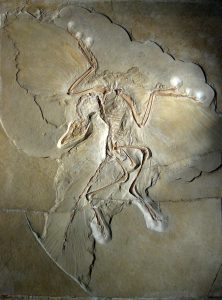
Co-option, also known as exaptation, occurs when a structure or gene that originally evolved for one function is repurposed for a new use. Rather than developing entirely new traits from scratch, evolution often works with what is already available by modifying existing features to serve new roles. This process operates through the remodelling of existing structures or genes, allowing them to take on new functions. In this way, complex traits can emerge from the raw materials already present in an organism’s genome or anatomy.
One of the most famous examples of co-option is the evolution of feathers. Feathers are thought to have originally evolved in theropod dinosaurs for purposes such as insulation or display, not for flight. Over time, these feathers were modified and refined, eventually becoming essential for flight in birds.
Co-option is not limited to physical structures but also applies to genes. For instance, genes involved in the development of limbs in vertebrates have been co-opted in other animals to help form entirely different structures, such as the wings of insects or the appendages of cephalopods. These examples show how evolution can creatively reuse existing genetic “toolkits” to create new features.
3. Advantageous Intermediates
Complex traits often evolve through a series of small, functional steps, with each stage offering some benefit to the organism. These advantageous intermediates help explain how intricate structures can arise gradually over time.
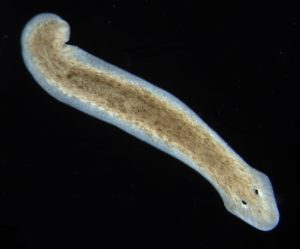
A classic example is the evolution of the eye. It likely began with simple light-sensitive cells that could detect changes in brightness, which could have helped early organisms respond to their environment.
Over time, these cells became more specialized, forming a curved surface to detect direction, then a pit to focus light, and eventually a lens to sharpen images. At each stage, the intermediate form was better at performing the specific function, so it would have been more likely to be favoured by natural selection. Advantageous intermediates operate through refinement, where a structure keeps the same function but becomes more effective over time.
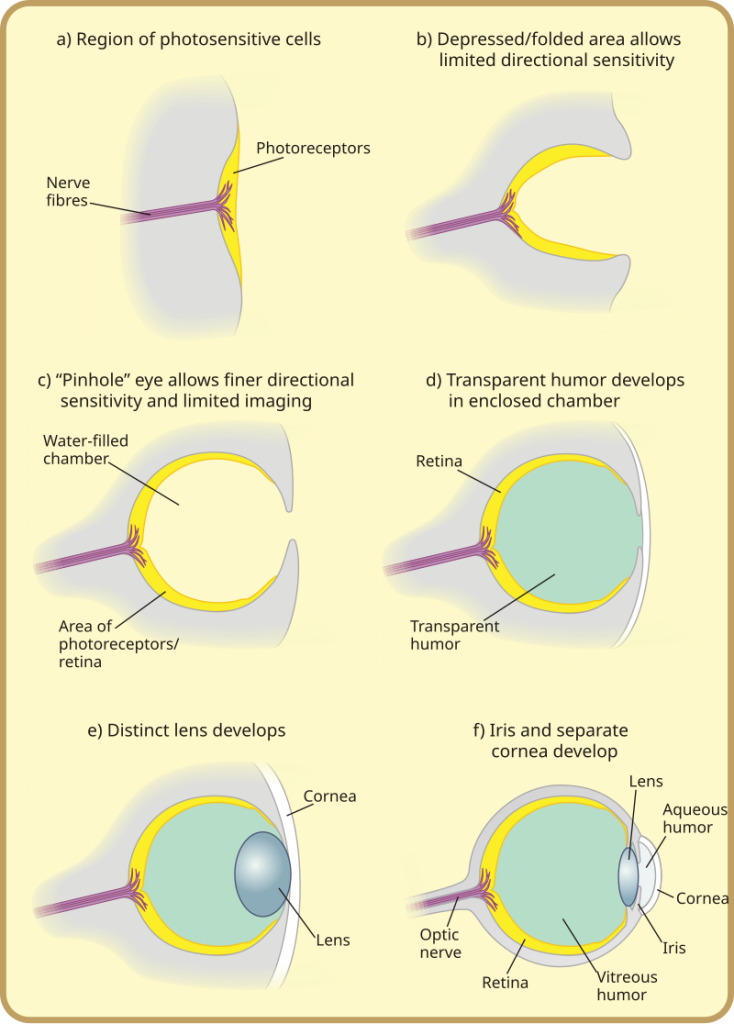
Fig 3.2.6 Image Description
The image illustrates the evolutionary stages of the eye through six labelled diagrams, showing increasing complexity from simple photosensitive cells to a fully developed eye.
- (a) Region of photosensitive cells: A simple patch of photoreceptors connected to nerve fibres that detect light.
- (b) Depressed/folded area: The photoreceptor patch begins to fold inward, allowing limited directional sensitivity.
- (c) “Pinhole” eye: The inward fold deepens into a water-filled chamber, providing finer directional sensitivity and limited image formation.
- (d) Transparent humour in enclosed chamber: The chamber fills with transparent humour, improving light transmission, with the retina lining the back.
- (e) Distinct lens develops: A lens forms at the front, behind the cornea, focusing light more effectively onto the retina.
- (f) Iris and separate cornea develop: The eye becomes fully structured, with a cornea, lens, aqueous humour, vitreous humour, iris, retina, and optic nerve, enabling sharp image formation and controlled light entry.
This sequence demonstrates the gradual evolution from simple light-sensitive cells to a complex, image-forming eye.
It is important to note that the mechanisms of macroevolution often work together to produce evolutionary innovations. For example, all of these mechanisms played a role in the evolution of bird flight. Shifts in homeotic gene expression helped shape the forelimbs into wings. Feathers, which originally evolved for insulation or display, were co-opted for aerodynamic purposes. Then, each intermediate stage, such as gliding or controlled flapping, offered incremental advantages which allowed natural selection to refine the structure and function of wings over time. This interplay of developmental changes, remodelling, and refinement shows how evolution can lead to complex, new features over time.
Knowledge Check
Text Description
- _____A process where a structure or gene originally evolved for one function is repurposed for a new use.
- _____ A field that studies how changes in development influence evolutionary changes in body form and structure.
- _____ Genes that control the body plan of an organism and determine where body parts develop.
- _____ A developmental change where juvenile traits are retained in the adult form of a descendant species.
- _____ A mechanism where a duplicated gene evolves a new function
- _____ The idea that intermediate forms of a trait can still provide a functional advantage, even if the final form is more complex.
- Gene Duplication and Divergence
- Advantageous Intermediates
- Paedomorphosis
- Co-option (Exaptation)
- Evolutionary Developmental Biology (Evo-Devo)
- Homeotic Genes
Answers:
- Co-option (Exaptation): A process where a structure or gene originally evolved for one function is repurposed for a new use.
- Evolutionary Developmental Biology (Evo-Devo): A field that studies how changes in development influence evolutionary changes in body form and structure.
- Homeotic Genes: Genes that control the body plan of an organism and determine where body parts develop.
- Paedomorphosis: A developmental change where juvenile traits are retained in the adult form of a descendant species.
- Gene Duplication and Divergence: A mechanism where a duplicated gene evolves a new function
- Advantageous Intermediates: The idea that intermediate forms of a trait can still provide a functional advantage, even if the final form is more complex.

